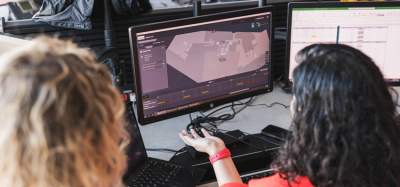App helps visually impaired travellers navigate Kentucky airport
- Like
- Digg
- Del
- Tumblr
- VKontakte
- Buffer
- Love This
- Odnoklassniki
- Meneame
- Blogger
- Amazon
- Yahoo Mail
- Gmail
- AOL
- Newsvine
- HackerNews
- Evernote
- MySpace
- Mail.ru
- Viadeo
- Line
- Comments
- Yummly
- SMS
- Viber
- Telegram
- Subscribe
- Skype
- Facebook Messenger
- Kakao
- LiveJournal
- Yammer
- Edgar
- Fintel
- Mix
- Instapaper
- Copy Link
Posted: 14 January 2018 | International Airport Review | No comments yet
Using Bluetooth and beacons dotted around the airport, the app tells passengers where they are and what is around them every step of the way through the airport.


ACCESSIBILITY: The Louisville skyline
Visually impaired travellers at Louisville International Airport now have a new tool to help them navigate the airport and find their gate.
The “Indoor Explorer” app, developed by the American Printing House for the Blind (APH), based in Louisville, Kentucky in partnership with Louisville Mayor Greg Fischer’s Office and the James Graham Brown Foundation, presents a groundbreaking opportunity that could completely alter travel for people with vision loss.
The feature is currently being tested and is in use at the Louisville International Airport. Using lessons learned from the pilot project, the technology will be deployed to airports across the country.
APH has used Bluetooth, beacon technology with the app for iOS devices. Once travellers download the app, they can easily navigate every aspect of the airport from the ticket counter, through security and directly to their gate.
It gives travellers the freedom to independently find the baggage claim, security, bathrooms, emergency exits, airport shops, restaurants and specific gate numbers.
“We can all relate to wanting a stress-free experience of quickly finding our way through an airport, especially when we are in a hurry or anxious to get home,” said Craig Meador, President of APH.
“Travellers who are blind or have vision loss want that too. No one wants to wait for assistance to get where they need to go. Indoor Explorer is essentially signage that can be heard, telling a traveller where they are each step of the way as they navigate independently.”
It uses beacons and indoor information stored in the OpenStreetMap database. More than 140 beacons are currently located throughout the terminal at Louisville International Airport. The beacons were installed over a two-week period in September in designated spots.
When used, the app looks up the beacon’s latitude, longitude and floor number. It also looks up points of interest on that same floor and reports their name, distance and position as you move. It also lets you use the GeoBeam or Compass feature to point your device to locations inside the building.
When using the app indoors, the compass, in addition to reporting the direction, names all the building features in that direction.
“We are proud that Louisville International is the first airport in the region to install and utilise this technology,” said Karen Scott, Interim Executive Director, Louisville Regional Airport Authority.
“This is a great tool to enhance accessibility for the blind and visually impaired and provide a positive customer experience, one of our top priorities for all travellers and airport visitors.
“We are also pleased to partner with the American Printing House for the Blind on these efforts.”
Indoor Explorer takes advantage of small beacons that periodically transmit brief bursts of data. The app can correlate each beacon’s identification with information about its precise location. It uses this information along with the signal strength of the beacon and any other beacons that may be in the vicinity to help determine your location.
Once the app has a location, it can access points of interest (POIs) such as ticket counter, shops, restaurants, security, bathrooms and specific gate numbers. The technology was developed in partnership with Mayor Greg Fischer’s Office. Mayor Fischer’s team worked closely with APH and Louisville International Airport to see that it would be supported and implemented quickly.
“We’re proud to be partners in this project, which removes barriers that some visitors and residents experience during travel,” Mayor Fischer said. “For many visitors, Louisville International Airport is the first experience of our city, and ‘Indoor Explorer’ underscores our city’s commitment to improving accessibility through innovation and collaboration.”
Related topics
Airport development, Apps, New technologies, Passenger experience and seamless travel, Passengers with reduced mobility (PRMs)


















